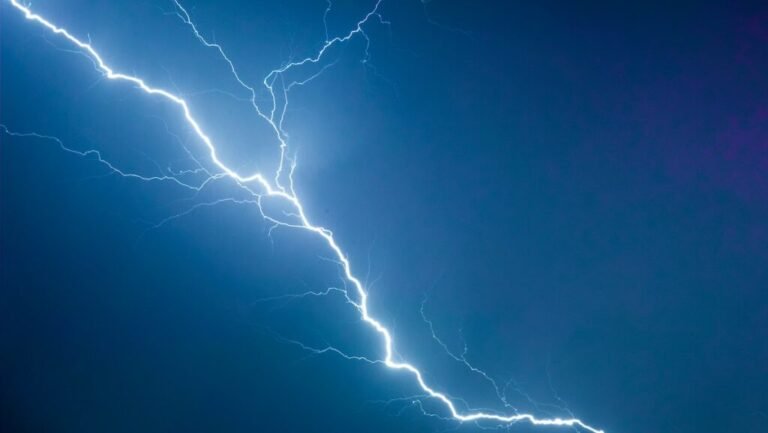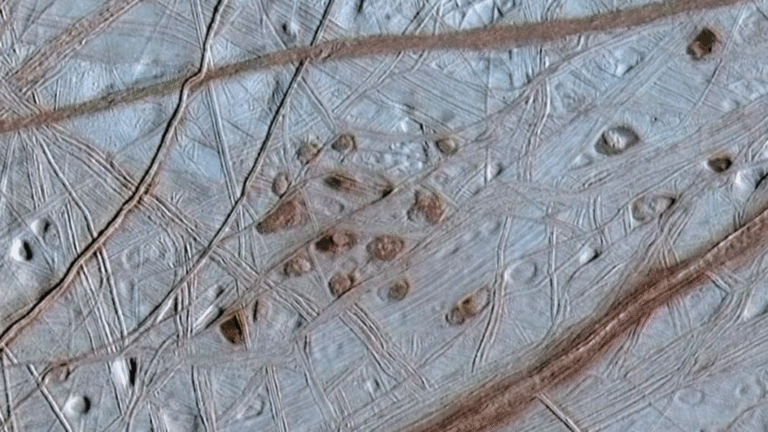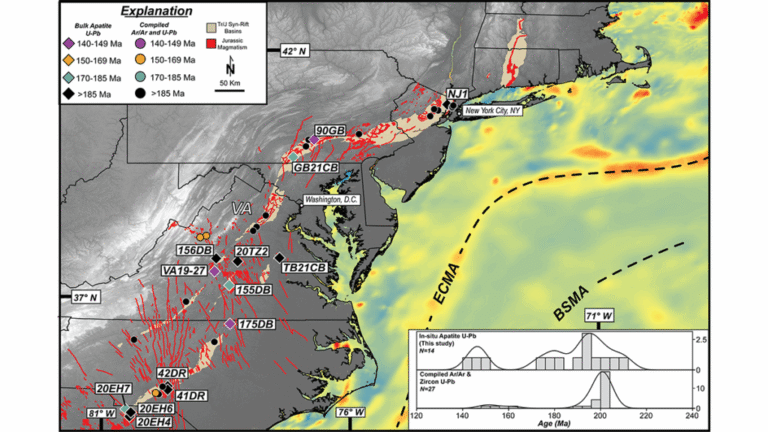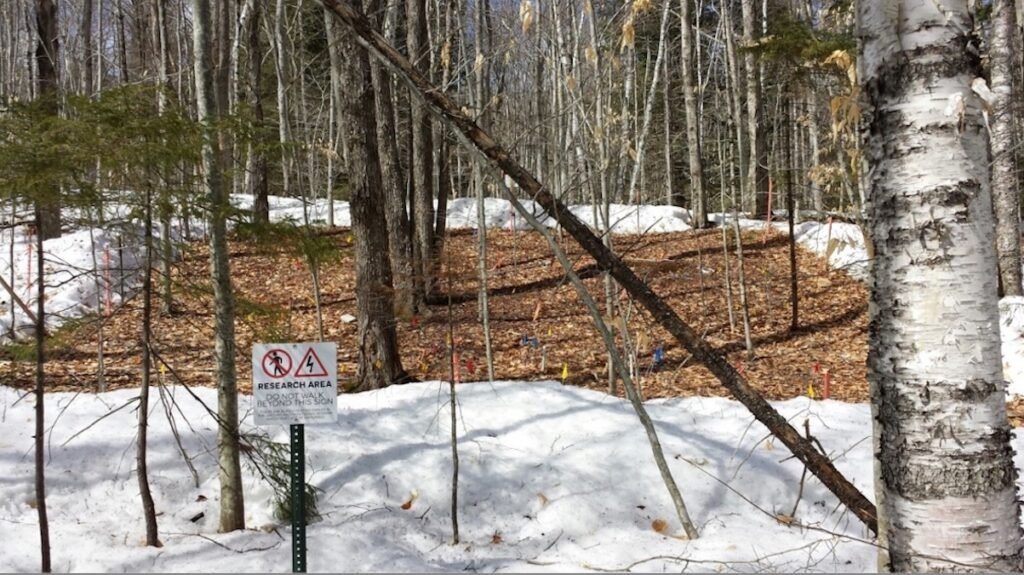
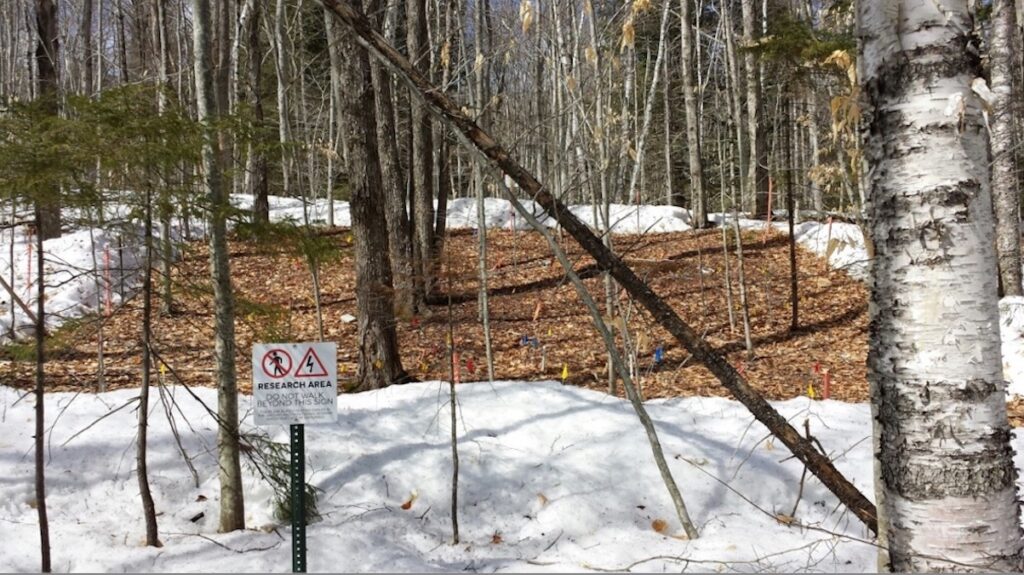
Since 2013, a small plot of forest in northern New Hampshire has been heated with buried cables, an experiment meant to simulate the effects of climate change on soil temperatures. Now, after a decade of artificial warming, scientists are getting a glimpse into how temperate forests may change in the future.
Previous studies of temperate forests indicated that climate change might accelerate tree growth during spring and summer growing seasons, increasing the volume of carbon that the world’s trees store and making them a critical player in fighting climate change. But a warmer world will also have warmer winters and less snow, which damage those same trees.
A new study, published in Proceedings of the National Academy of Sciences of the United States of America, indicates that changing winters could damage trees enough to offset the growth benefits of warmer temperatures. Climate models don’t take this offset into account and may be overestimating the ability of forests in the northeastern United States to fight climate change.
“Winter climate change in systems that are adapted to snow and its insulation is going to cause a reduced ability to sequester carbon,” said Pamela Templer, a forest ecologist at Boston University and a coauthor of the new study.
Hot and Cold
To test how changing snow behavior in a warming temperate forest might affect carbon sequestration, the research team measured biomass changes in red maple trees in three types of plots: one plot treated with warming cables during the growing season, one treated with both warming and recurring freeze-thaw cycles in the winter, and reference plots with no treatments.
Each time it snowed from 2013 to 2022, researchers shoveled the insulating snow off the second plot, exposing soil to the freezing air for 72 hours. Then, they thawed the soil for 72 hours with warming cables.
Researchers measured changes in biomass, a proxy for carbon storage, with metal bands that record the diameter of trunks.
The freezing and thawing cycles simulated in the study will likely become more common with climate change, said Kyle Arndt, a climate scientist at the Woodwell Climate Research Center who was not involved in the new study. “In these kinds of northern forests, this is expected to happen more often.”
“What’s striking here is that when you add the effect of winter climate change, the difference [between warmed and unwarmed plots] disappears.”
Those cycles of freezing and thawing damage tree roots, limiting their ability to take up nutrients, including nitrogen, meaning the trees can’t grow as much as they would following a more stable winter.
The plot of trees that was warmed in the growing season sequestered 63% more carbon than the reference plots. But the plot with both warmer growing seasons and additional freeze-thaw cycles sequestered just 31% more. Analysis of the growth data showed that the difference between this plot and the reference plot (with no warming or freeze-thaw cycles) was not statistically significant.
“What’s striking here,” Templer said, “is that when you add the effect of winter climate change, the difference [between warmed and unwarmed plots] disappears.”
The results align with a previous study from the same research group showing a 40% reduction in aboveground tree growth for sugar maple trees when insulating snow was removed.
Arndt said the results made sense and that the particularly long dataset added credence to the findings.
The results may also have implications for nutrient cycling on the ecosystem scale, said Carol Adair, a forest ecologist at the University of Vermont who was not involved in the new study. When roots are damaged by freeze-thaw cycles, all the nitrogen they can’t absorb is left in the soil and flushed into watersheds during the spring melt.
“We see a lot of nutrient loss happening [in the winter],” Adair said. Nutrients lost to surface waters could spur harmful algal blooms and even create a feedback loop that further decreases forest growth. Climate change–driven rain, rain-on-snow, and snowmelt events during warmer winters exacerbate the issue.
Forests’ Role in Carbon Storage
The results suggest that current models of the climate system may be overestimating how much carbon mid- to high-latitude forests will be able to sequester over the next couple of centuries, according to the authors.
“Without including these freeze-thaw cycles, they’re going to be overestimating [carbon storage] over time.”
The researchers searched existing model projections and could not find any that included the complex freeze-thaw dynamics identified in the plots, said Emerson Conrad-Rooney, a doctoral student and ecologist at Boston University and lead author of the new study. “How winter climate change can impact forest processes is not typically incorporated.”
“The models are really only including some of these net positive impacts” of climate change on northern forest biomass, Arndt said. “Without including these freeze-thaw cycles, they’re going to be overestimating [carbon storage] over time.”
“If we want to understand how future forests are going to sequester carbon, we need to know mechanistically how they’re going to behave [under a changing climate],” Templer said.
—Grace van Deelen (@gvd.bsky.social), Staff Writer
Citation: van Deelen, G. (2025), Warming winters sabotage trees’ carbon uptake, Eos, 106, https://doi.org/10.1029/2025EO250278. Published on [DAY MONTH] 2025.
Text © 2025. AGU. CC BY-NC-ND 3.0
Except where otherwise noted, images are subject to copyright. Any reuse without express permission from the copyright owner is prohibited.
